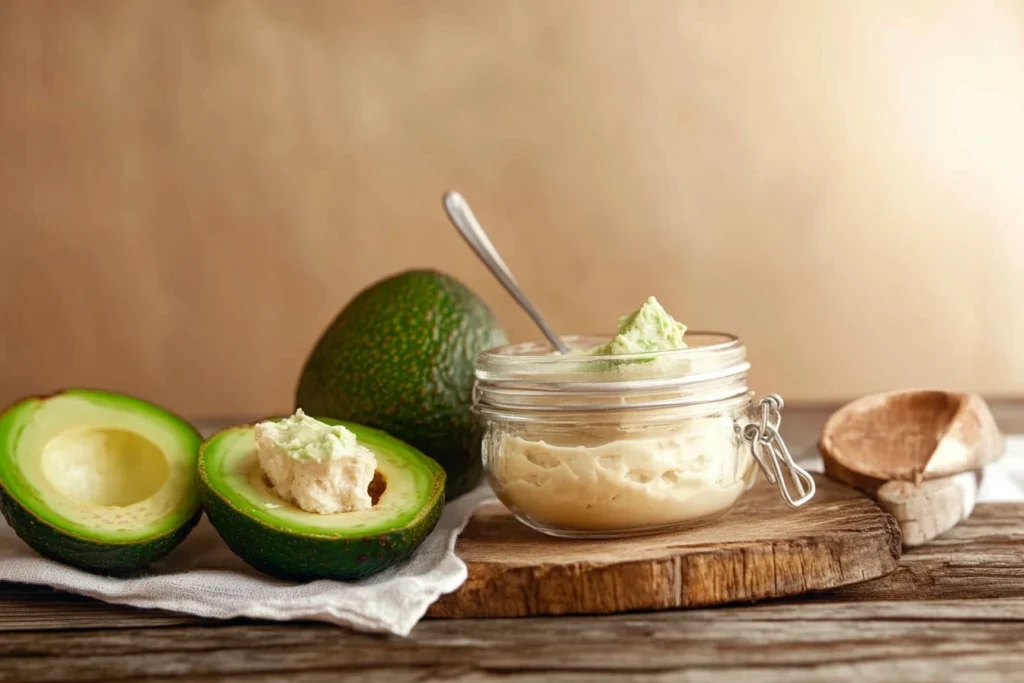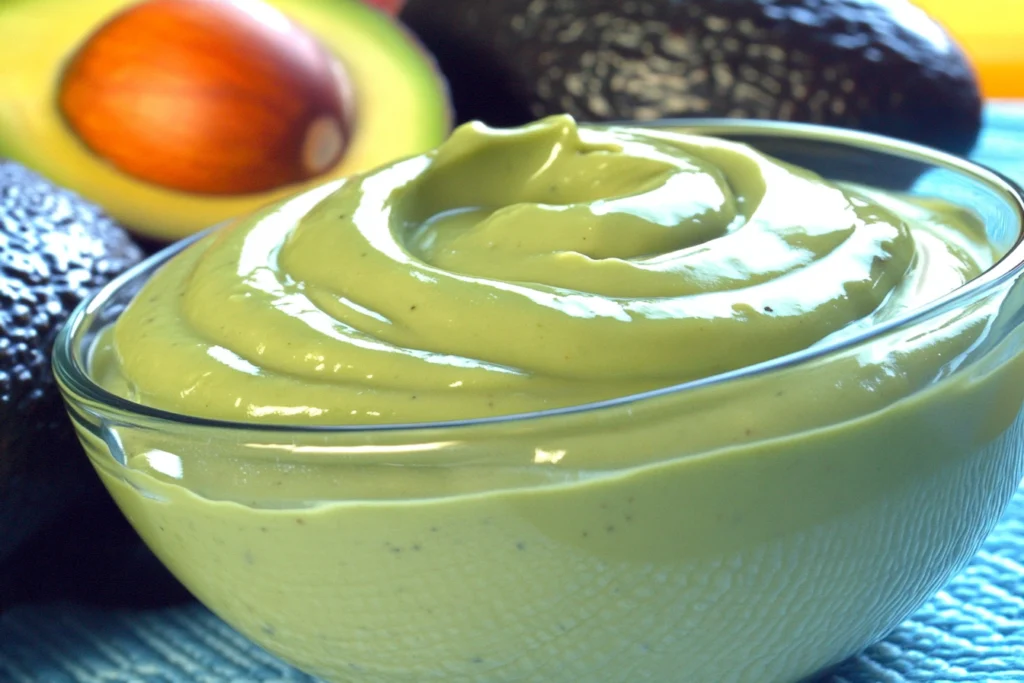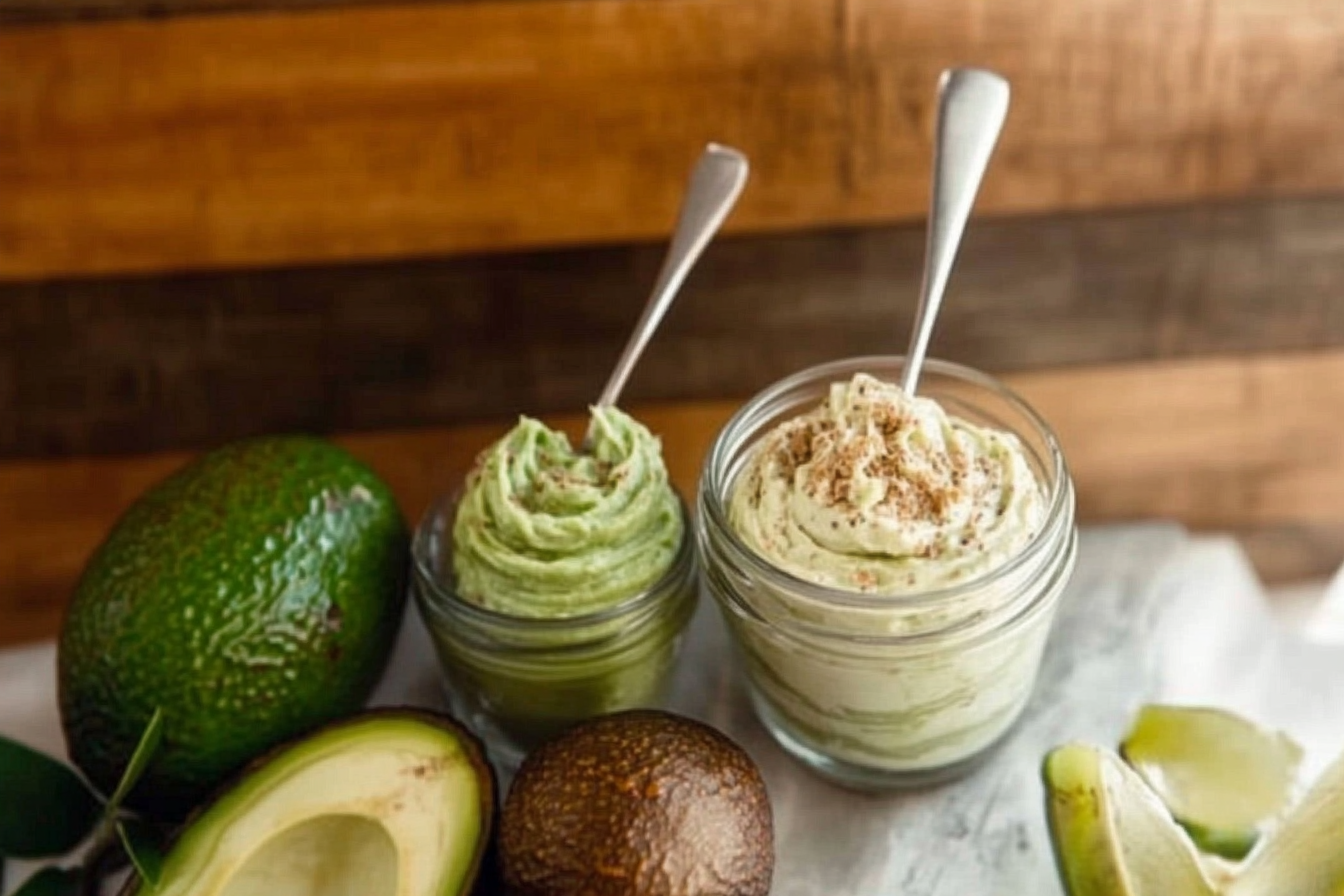Avocado spread is a beloved addition to many dishes, praised for its creamy texture, nutritional value, and versatility. Yet, its relatively short shelf life leaves many wondering how to maximize its longevity. This article dives deep into the subject, offering comprehensive guidance to ensure your avocado spread stays fresh and flavorful.
Part 1: Understanding Avocado Spread
What is Avocado Spread?
Avocado dip is a smooth, flavorful condiment made primarily from ripe avocados.
- Definition and Common Uses:
This spread is used widely as a topping for toast, a dip for chips, or a creamy addition to sandwiches and wraps. Its mild yet rich flavor makes it a favorite in both breakfast and snack recipes. - Popular Ingredients in Avocado Spread:
While the base ingredient is, of course, avocado, many recipes include lemon juice, salt, pepper, olive oil, garlic, or spices to enhance flavor and preservation.
Nutritional Value of Avocado Spread
- Health Benefits of Avocado:
Avocados are rich in heart-healthy monounsaturated fats, fiber, and essential vitamins like potassium, vitamin E, and B vitamins. Regular consumption supports cardiovascular health, aids digestion, and provides sustained energy. - Comparing Homemade vs. Store-Bought Avocado Spread:
- Homemade spreads often boast a fresher taste and lack artificial additives but typically have a shorter shelf life.
- Store-bought versions, on the other hand, may include preservatives and stabilizers that extend their longevity, sometimes at the expense of nutritional purity.
How to Store Avocado Spread Properly
- Ideal Temperature for Storage:
Avocado dip should be refrigerated at temperatures between 34–40°F (1–4°C). This prevents bacterial growth and slows down oxidation. - Containers That Preserve Freshness:
Airtight containers are crucial to minimize exposure to air, which can cause browning. Use glass or BPA-free plastic options to ensure the best results.
Homemade vs. Store-Bought Avocado Spread
- Key Differences in Shelf Life:
Store-bought avocado spread typically lasts 1–2 weeks unopened, while homemade varieties may only last 2–3 days in the refrigerator. - Additives and Preservatives in Store-Bought Versions:
Citric acid, ascorbic acid, and stabilizers are common in commercial products to prevent spoilage and maintain texture.
Factors Affecting the Shelf Life of Avocado Spread
- Exposure to Air:
Oxidation occurs quickly when avocados are exposed to oxygen, turning the spread brown and reducing its freshness. - Temperature and Humidity:
Warm temperatures accelerate spoilage, while high humidity can encourage mold growth.
Signs That Avocado Spread Has Gone Bad
- Visual Cues (Color Changes):
A significant browning or the appearance of dark spots can indicate spoilage. While slight browning on the surface might be harmless, any mold is a clear sign to discard it. - Texture and Smell Indicators:
A slimy texture or sour, rancid smell means the spread is no longer safe to eat.
The Role of Ingredients in Longevity
- Lemon Juice and Acidity Levels:
Acidic ingredients like lemon or lime juice slow down browning and microbial growth, acting as natural preservatives. - Effects of Oil and Seasonings:
A light layer of olive oil on the surface can create a barrier against air, extending freshness.
Comparison of Refrigerated vs. Non-Refrigerated Avocado Spread

- How Long Each Type Lasts:
Refrigerated spreads last longer due to the lower temperatures slowing spoilage. Non-refrigerated options, often processed with preservatives, can last weeks unopened but should be consumed quickly after opening. - Tips for Ensuring Freshness:
- Always refrigerate avocado spread immediately after use.
- Use smaller portions to avoid repeated exposure to air.
Does Freezing Work for Avocado Spread?
- Pros and Cons of Freezing:
Freezing can extend the shelf life by several months, but it may affect the texture, making the spread slightly watery or grainy upon thawing. - Steps for Freezing Properly:
- Place the spread in a freezer-safe container, leaving a small gap at the top.
- Add a thin layer of lemon juice to prevent browning.
- Seal tightly and label with the date for tracking.
Common Mistakes That Reduce Avocado Spread’s Shelf Life
- Overexposure to Heat:
Leaving avocado spread at room temperature for extended periods can lead to rapid bacterial growth and spoilage. - Poor Storage Practices:
Using non-airtight containers or failing to refrigerate promptly are common mistakes that can significantly shorten its shelf life.
Part 2: Extending the Shelf Life of Avocado Spread
The Best Storage Practices
Proper storage is the key to extending the life of avocado spread while maintaining its freshness and flavor.
- Airtight Containers and Vacuum-Sealing:
Store avocado spread in airtight containers to prevent exposure to air. For an even better solution, consider vacuum-sealing the spread, which removes all oxygen and drastically slows down oxidation. - Storing in Smaller Portions:
Dividing the spread into smaller portions minimizes repeated exposure to air and bacteria. Use individual containers for meal prepping or freezing.
Using Antioxidants to Preserve Freshness
Antioxidants are essential for keeping avocado spread vibrant and fresh.
- Benefits of Lemon Juice or Vinegar:
Both lemon juice and vinegar are natural preservatives. Their acidity prevents the enzymatic browning process and slows microbial growth. - Natural vs. Artificial Preservatives:
While natural options like citrus juice are excellent, store-bought spreads may include artificial preservatives, such as calcium ascorbate, for longer shelf life.
Innovative Packaging Techniques for Longevity
Packaging plays a pivotal role in how long avocado dip stays fresh.
- Resealable Bags:
Store avocado spread in resealable bags, pressing out as much air as possible before sealing. This is a convenient option for freezing. - Food-Safe Plastic Wrap:
When storing in a bowl, press plastic wrap directly onto the surface of the spread to prevent air from reaching it.
Can Avocado Spread Be Reused After Opening?
Many wonder if opened avocado dip can be safely reused.
- Guidelines for Safe Consumption:
Once opened, store the spread in an airtight container and consume it within 3–5 days. Avoid using utensils that have been in contact with other foods, as this can introduce bacteria. - Minimizing Contamination Risks:
Always use a clean spoon or knife to scoop out avocado spread. Cross-contamination from other foods can accelerate spoilage.
Myths About Avocado Spread Shelf Life
There are many misconceptions surrounding the longevity of avocado spread. Here are a few clarified:
- Misconceptions About Oxidation:
While browning doesn’t always mean spoilage, it does indicate that the spread is no longer at its peak freshness. Mixing in the brown layer may not restore the original flavor. - Addressing Shelf Life Myths:
Adding large amounts of oil or salt doesn’t make avocado spread last indefinitely. Proper storage is still required.
Refrigeration Tips for Maximizing Freshness
Storing avocado spread in the refrigerator correctly can make all the difference.
- Optimal Temperature Settings:
Set your refrigerator between 34–40°F (1–4°C). Avoid placing the container near the fridge door, where temperatures fluctuate. - Avoiding Freezer Burn:
If freezing, ensure the container is airtight to prevent freezer burn, which can ruin both the texture and flavor of the spread.
Using Preservative Ingredients in Homemade Recipes
Homemade avocado spread can last longer with the right ingredients.
- Salt and Citric Acid:
Salt not only enhances flavor but also acts as a mild preservative. Citric acid, found in lemon juice, is another excellent addition for freshness. - Natural Preservatives from Other Ingredients:
Adding onions, garlic, or olive oil can also help extend the spread’s shelf life, thanks to their antimicrobial properties.
Avocado Spread Shelf Life in Different Climates
Climate significantly affects the longevity of avocado spread.
- How Climate Affects Longevity:
In hot and humid climates, avocado spread spoils faster due to higher temperatures and moisture levels. Cooler, dry conditions are more conducive to longer storage. - Adjustments for Humid vs. Dry Conditions:
In humid areas, store avocado spread in the coldest part of the refrigerator. For dry climates, ensure the container is sealed tightly to prevent dehydration.
Safe Disposal of Spoiled Avocado Spread
Handling spoiled avocado spread responsibly prevents waste and health risks.
- Identifying Spoiled Spread:
If the spread smells rancid, has visible mold, or a slimy texture, it should be discarded immediately. - Environmentally Friendly Disposal Methods:
Composting is a great way to dispose of spoiled avocado spread. Avoid throwing it down the sink, as it may clog pipes.
Future Innovations in Avocado Spread Preservation
As demand for avocado spread grows, so does innovation in preservation techniques.
- Emerging Technologies in Food Storage:
Vacuum-sealed jars with built-in oxygen absorbers are gaining popularity. Advanced preservatives derived from natural sources are also being explored. - Potential for Longer Shelf Lives:
Research into plant-based antimicrobial compounds could extend the shelf life of avocado spreads without compromising their natural appeal.
Part 3: FAQs and Additional Tips
Frequently Asked Questions About Avocado Spread Storage
1. How Long Does Homemade Avocado Spread Last?
Homemade avocado spread typically lasts 2–3 days in the refrigerator when stored in an airtight container. The addition of lemon juice can help extend its freshness slightly.
2. Can I Refrigerate After Leaving It Out Overnight?
No. If avocado spread has been left at room temperature for more than two hours, it’s best to discard it due to the risk of bacterial growth.
3. Does Adding Lemon Juice Stop Browning Entirely?
While lemon juice slows the browning process, it doesn’t prevent it entirely. For optimal freshness, store the spread in an airtight container with a layer of lemon juice on top.
4. How Can I Tell if Avocado Spread is Still Fresh?
Fresh avocado spread should have a smooth texture, vibrant green color, and a mild, nutty aroma. Any slimy texture, dark discoloration, or foul smell indicates spoilage.
5. Can I Freeze Store-Bought Avocado Spread?
Yes, store-bought avocado dip can be frozen, especially if unopened. Once opened, transfer it to a freezer-safe container, ensuring it’s sealed tightly.
6. Why Does My Avocado Spread Turn Watery?
Separation of liquid occurs naturally in avocado dip due to its water content. Simply stir it to restore its texture, provided there are no signs of spoilage.
7. What’s the Best Way to Avoid Cross-Contamination?
Always use a clean spoon or knife when scooping out the spread. Avoid double-dipping or using utensils that have come into contact with other foods.
8. Can I Use Avocado Spread Past the Expiration Date?
If the spread looks, smells, and tastes fine, it may still be safe to consume a day or two past the expiration date. However, proceed with caution and trust your senses.
9. Does Avocado Spread Last Longer if Left in the Pit?
Including the pit may help reduce surface browning but does not significantly extend shelf life. Proper storage techniques remain crucial.
10. Is Brown Avocado Spread Safe to Eat?
Brown avocado dip may still be safe, but it’s not as fresh or flavorful. Mix it to see if the green color underneath is intact, but discard if there’s a sour smell or slimy texture.

How to Make Small Batches of Avocado Spread
Recipes for Single-Serving Sizes
Making smaller portions is ideal to reduce waste and ensure freshness.
- Simple Recipe for One Serving:
- ½ ripe avocado
- 1 teaspoon lemon juice
- Salt and pepper to taste
Mash the ingredients together and use immediately.
Reducing Waste
Small batches allow you to enjoy fresh avocado spread without worrying about leftovers spoiling. Use measuring tools to portion out the exact amount needed for meals or snacks.
Using Leftover Avocado Spread Creatively
If you have leftover avocado spread, try incorporating it into new recipes:
- Incorporating into Recipes:
- Use as a creamy pasta sauce base.
- Add it to scrambled eggs or omelets.
- Spread it on grilled chicken or fish for added flavor.
- Transforming into New Dishes:
- Blend it with yogurt or sour cream for a tangy dip.
- Mix it with salsa for a zesty guacamole twist.
Comparing Avocado Spread to Other Spreads
- Shelf Life Comparisons:
Compared to other spreads like hummus or peanut butter, avocado spread has a much shorter shelf life due to its high water and oil content. - Versatility in Usage:
While peanut butter and hummus have diverse applications, avocado spread is prized for its fresh flavor and health benefits, making it a unique choice in salads, sandwiches, and snacks.
Environmental Impact of Avocado Spread Wastage
Consequences of Spoiling
Spoiled avocado spread contributes to food waste, which has a significant environmental impact. Discarded spreads can lead to increased methane emissions in landfills.
Tips for Reducing Waste
- Store spread in smaller portions to avoid spoilage.
- Use leftover spread in creative recipes before it spoils.
- Consider composting spoiled avocado spread instead of throwing it away.
Avocado Spread for Meal Prepping
Ensuring Freshness During Meal Prep
- Store pre-portioned avocado spread in small, airtight containers.
- Add a layer of lemon juice or olive oil to prevent browning.
- Use labels to track preparation and expiration dates.
Storing Pre-Made Portions
Pre-made avocado spread can be refrigerated for up to 3 days or frozen for longer storage. Thaw frozen portions in the refrigerator overnight before use.
Storing Avocado Spread in Bulk
Tips for Families and Large Households
For larger quantities, divide the spread into multiple containers to reduce the risk of spoiling the entire batch. Use vacuum-sealing for maximum longevity.
Avoiding Spoilage in Bulk Storage
- Freeze unused portions to extend shelf life.
- Store containers in the coldest part of the refrigerator.
- Regularly check for signs of spoilage.
Cultural Uses of Avocado Spread Worldwide
Avocado spread’s popularity extends across the globe, with unique variations in different cultures:
- Global Variations:
- In Mexico, it’s a base for guacamole.
- In the Mediterranean, it’s paired with pita bread.
- In Australia, it’s a staple on toast with poached eggs.
- Unique Storage Challenges:
In warmer climates, refrigeration is critical to prevent rapid spoilage. Some regions also incorporate spices or oils to enhance preservation.
Common Tools to Maintain Avocado Spread Freshness
Gadgets and Hacks
- Avocado savers (special containers designed to keep avocados fresh).
- Airtight silicone lids that seal directly onto bowls.
Advanced Storage Solutions
Vacuum sealers and oxygen-absorbing packets are advanced options for maintaining freshness in both refrigerated and frozen spreads.
Summary: Best Practices for Keeping Avocado Spread Fresh
Key Takeaways
- Store avocado spread in airtight containers to reduce oxidation.
- Use lemon juice or olive oil as natural preservatives.
- Refrigerate promptly and avoid leaving it out at room temperature for extended periods.
Final Tips for Longevity
- Divide into smaller portions for easier storage and use.
- Regularly check for signs of spoilage.
- Experiment with freezing techniques to enjoy avocado spread year-round.
Related Article : Can you make avocado toast the night before?

